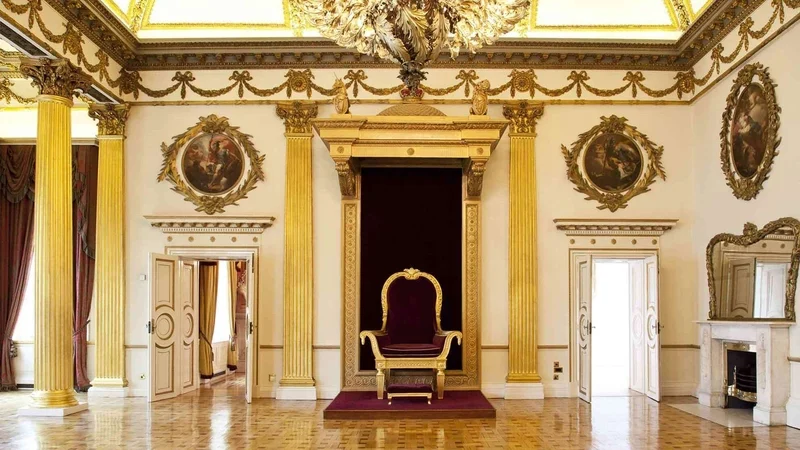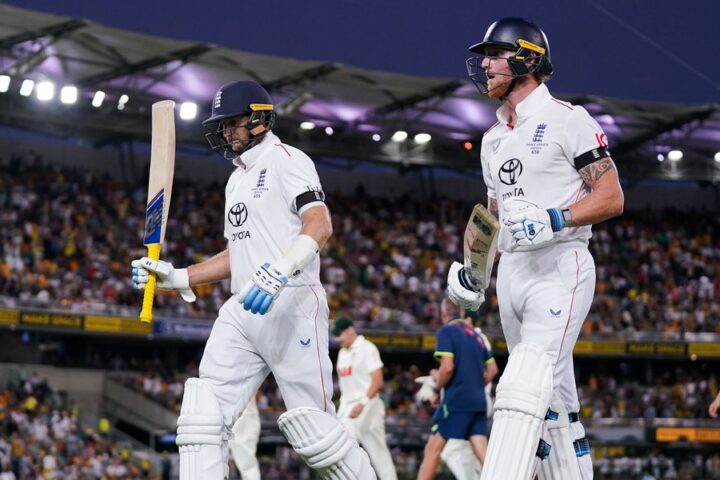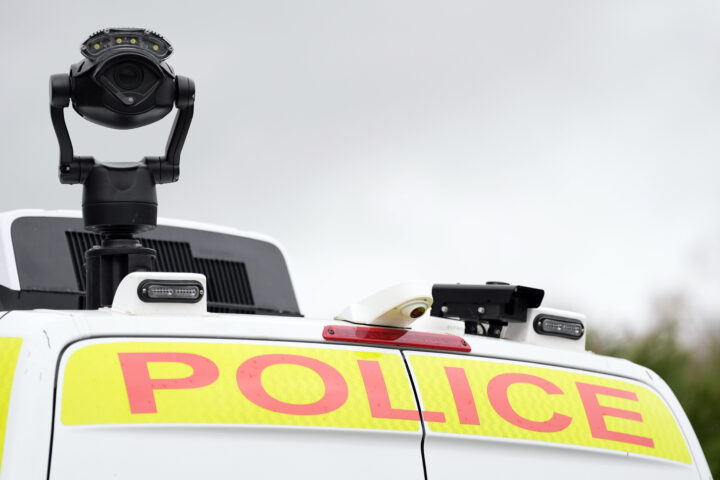Analysis: It’s 1934 and the new US envoy to Ireland gets to his feet to speak after a lavish State dinner when he suddenly collapses and dies
When the new United States envoy to the Irish Free State William McDowell took up duties in April 1934, Éamon de Valera hosted a state banquet in the Throne Room at Dublin Castle to formally welcome him to Ireland. It was the first time that a state banquet was held at Dublin Castle and marked the start of a series of banquets that de Valera would host there over the course of the decade in honour of important guests and foreign envoys from countries with whom the Irish Free State had established diplomatic ties.
The banquet series reinforced the status of Dublin Castle as the designated venue for official hospitality by the Irish Government which had begun with the state reception during the 1932 Eucharistic Congress and the St. Patrick’s Day celebrations in 1933 and 1934. The number of state venues for official hospitality would expand by the end of the decade to include Áras an Uachtaráin and Iveagh House.
What Ireland looked like in 1934 from US producer and writer James Anthony FitzPatrick as featured in FitzPatrick’s Traveltalks
In international relations, formal dining has long served as a means to demonstrate the importance attached to certain relationships. When examining Irish state dining in the first decades after independence, it is apparent that the Irish government placed significant importance on the relationship with the United States.
The McDowell banquet menu was reminiscent of the menu created by the Shelbourne Hotel’s head chef Otto Wuest for the state banquet in honour of the American Secretary of State Frank Billings Kellogg, whose official visit in 1928 had been the first by an international statesman to the Irish Free State. The McDowell menu also contained the largest number of courses that would be served at a banquet at Dublin Castle in honour of any one guest during the 1930s.
The menu was in line with then current trends in fine dining in terms of menu sequence. It began with an hors d’oeuvre followed by soup, fish, an entrée, meat, savoury and sweet entremets, dessert and coffee, and featured luxury commodities such as lobster and foie gras. Guests at the McDowell banquet were to be served a Grape Fruit Cocktail, Clear Turtle Soup and Casserolle of Lobster American, followed by Foies Gras [sic] with Russian Salad, Roast Irish Lamb with Mint Sauce, French beans and Asparagus Mousseline, Limerick Ham with Champagne Sauce, Angels on Horseback, Dessert and Coffee.
The menu contained the largest number of courses that would be served at a banquet at Dublin Castle in honour of any one guest during the 1930s
As host, de Valera welcomed the American guest with a formal speech and offered a toast in honour of his guest. In keeping with diplomatic custom of the period, toasts were offered once dessert was served. Just before that course, McDowell, who was reportedly in good spirits throughout the evening, stood to deliver his reply. He began to speak when he grew pale and collapsed. Despite attempts to revive him, he never regained consciousness and was pronounced dead shortly afterwards.
The envoy’s body was transported from Dublin Castle and brought to the American Legation in the Phoenix Park, where he was embalmed and lay in state for three days. The Dáil adjourned for a day as a mark of respect, flags were flown at half-mast over official buildings in Dublin and a memorial service was held at the Harcourt Street Baptist Church in the city centre.
The Department of External Affairs drew up the necessary protocol for the removal and repatriation of the deceased– the first time such a protocol had been required. Arrangements were made to return McDowell to the United States, where he was to be received with full military honours.

On April 13th, the casket – draped in the American flag – was placed on a gun carriage and escorted from the American Legation to Kingsbridge (now Heuston) station by the Blue Hussars. The funeral procession, established by External Affairs in consultation with the American Legation, was led by the military escort, followed by the gun carriage bearing the coffin. They were then joined by the Army Council, the Executive Council of the Irish Free State, members of the diplomatic dorps, political leaders of all parties, representatives of the Consulate Corps, Lord Mayors, members of Dublin Corporation, deputies, senators and other mourners.
The Great Southern Railway Company, precursor to Coras Iompaire Eireann (CIE), provided a special train to convey the body to Cork with a state saloon coach for the official party and a mortuary van for the casket. As the cortège reached Kingsbridge station, a 15-gun salute – commensurate with the rank of Lieutenant General or Vice-Admiral – was fired from Richmond Barracks and the death salute was sounded as the coffin was placed aboard the train.
The US was the first country for which the Department of External Affairs drew up an official protocol for the repatriation of a diplomatic representative who had unexpectedly died in service
The Irish government was represented by the Vice-President of the Executive Council Séan T. O’Kelly and Minister for Lands and Fisheries Joseph Connolly who accompanied the remains to Cobh. There, the coffin was transferred with military honours onto a tender and conveyed to the SS Manhattan, a liner operated by the United States Lines transatlantic shipping company. As the tender left the quayside, the Army band played the Dead March and the buglers sounded The Last Post.
The US figured prominently in a number of formative moments in the early diplomatic history of the Irish Free State, including the first official state visit and the first formal banquet at Dublin Castle for ministerial envoys. It was also, albeit unexpectedly, the first country for which the Department of External Affairs drew up an official protocol for the repatriation of a diplomatic representative who had unexpectedly died in service.














